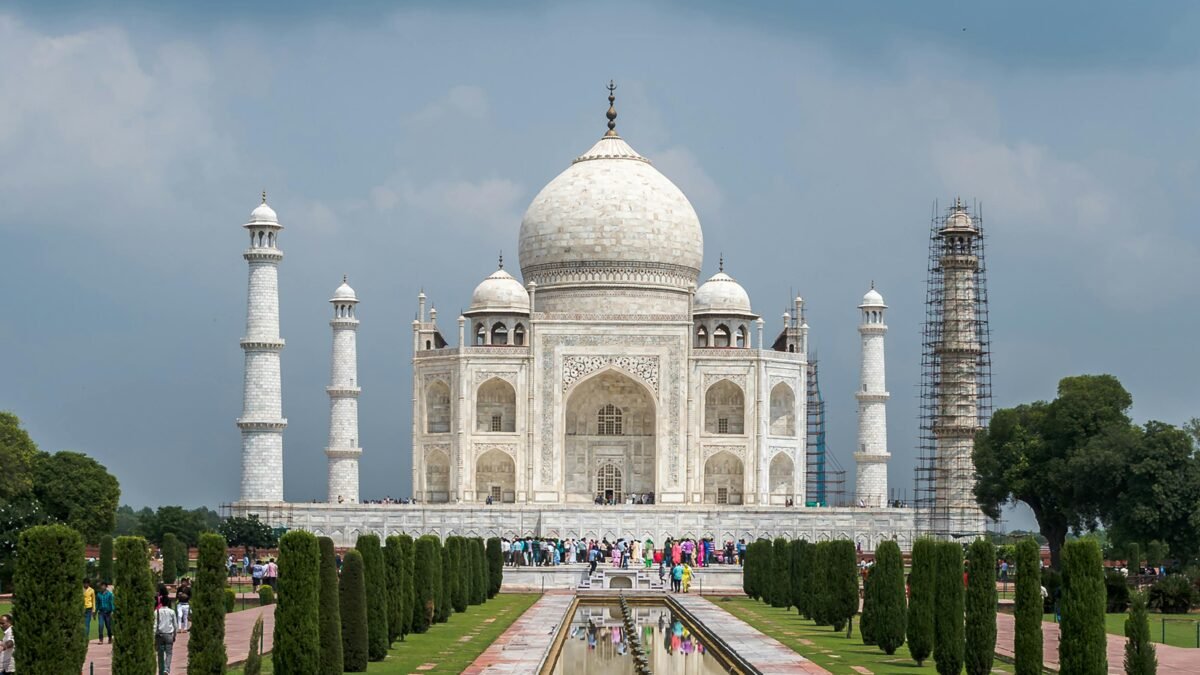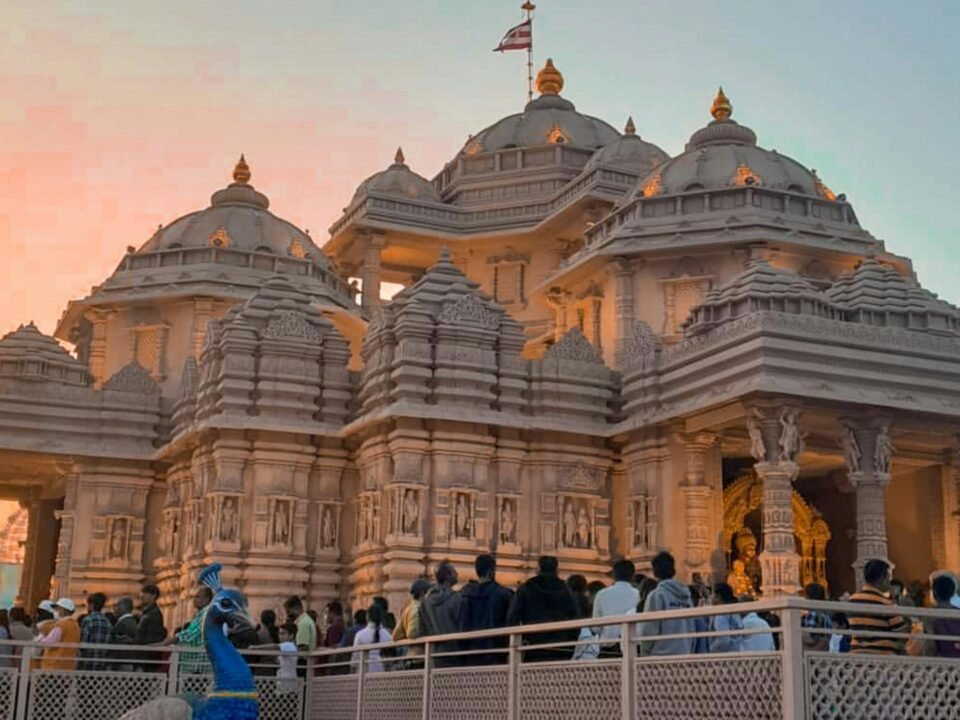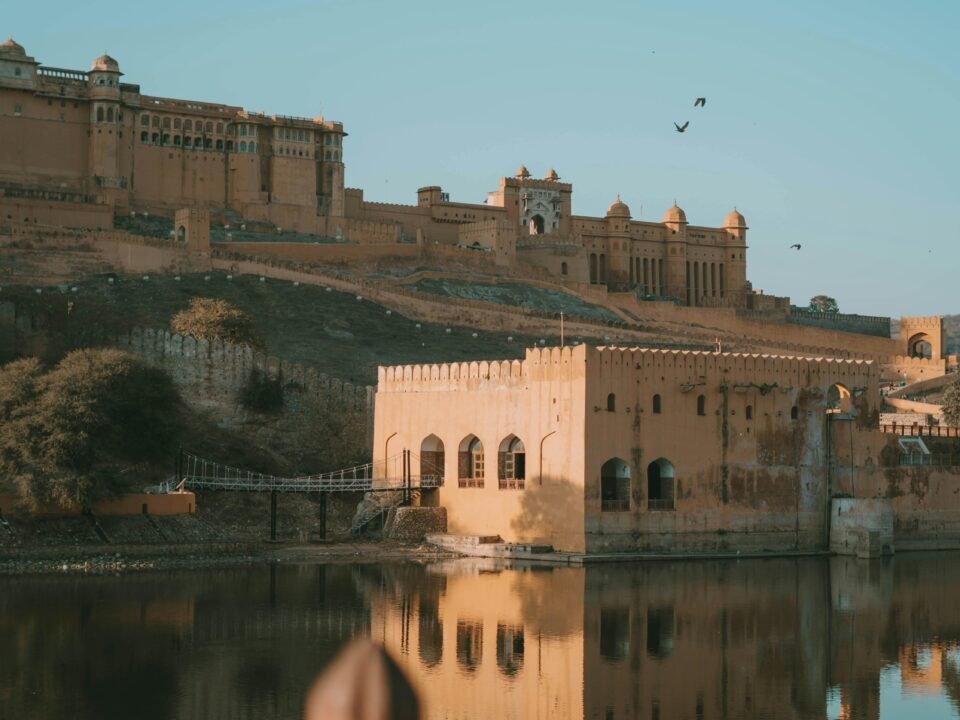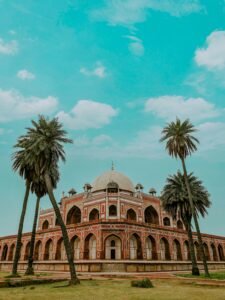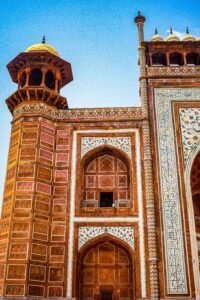

Amer Fort: Jewel of Rajasthan
July 3, 2024

The Majestic Akshardham Temple in Delhi
July 3, 2024Majestic Taj Mahal: A Jewel of Agra
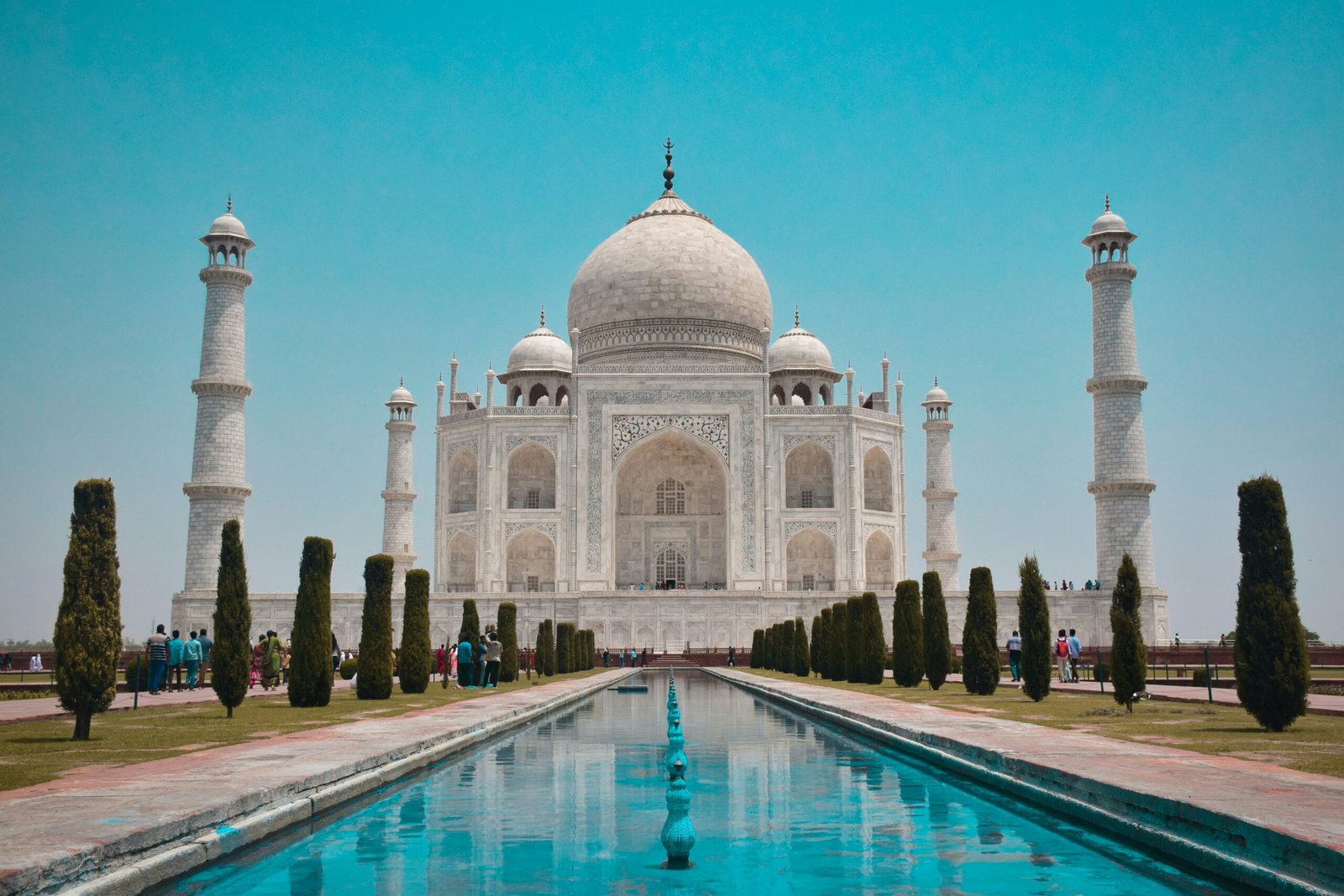

Historical Significance and Construction
The Taj Mahal stands as a testament to the profound love between Mughal Emperor Shah Jahan and his wife, Mumtaz Mahal. The historical significance of this majestic structure is deeply rooted in this romantic legacy. After Mumtaz Mahal passed away in 1631, Shah Jahan was devastated and resolved to build a mausoleum that would epitomize their eternal love. The Taj Mahal, located in Agra, Uttar Pradesh, thus emerged as a symbol of his immense grief and unyielding affection.
Construction of the Taj Mahal commenced in 1632 and spanned over two decades, concluding in 1653. This colossal undertaking demanded meticulous planning and immense resources. The emperor commissioned the finest craftsmen from across the empire and beyond, including architects, stonecutters, inlayers, carvers, painters, calligraphers, dome builders, and other artisans. It is estimated that around 20,000 workers were involved in the construction effort.
The materials used in building the Taj Mahal were sourced from various regions, reflecting the empire's extensive reach. The pure white marble that defines the monument was quarried from Makrana in Rajasthan. Precious stones such as jasper, jade, crystal, turquoise, and sapphire were imported from Tibet, China, Sri Lanka, and Afghanistan. Red sandstone, used extensively in the surrounding structures, was brought from Fatehpur Sikri. These materials were intricately inlaid into floral patterns and calligraphic scripts, enhancing the aesthetic allure of the mausoleum.
The architectural style of the Taj Mahal is an exquisite fusion of Persian, Islamic, and Indian elements. The central dome, flanked by four smaller domes and four minarets at the corners, exemplifies Persian influence. The charbagh or garden layout, divided into quadrants by watercourses, reflects Timurid and Mughal traditions. The intricate pietra dura inlay work, calligraphy, and symmetrical geometry underscore the Islamic artistry that permeates the structure.
The timeline of the Taj Mahal's construction underscores the dedication and precision involved in its creation. Each phase, from the laying of the foundation to the final touches of inlay and calligraphy, was executed with remarkable detail. Today, the Taj Mahal is celebrated not only as a monumental feat of architecture and engineering but also as an enduring symbol of love and an integral part of Uttar Pradesh tourism.
Architectural Marvel and Design
The Taj Mahal, a UNESCO World Heritage Site located in Agra, Uttar Pradesh, stands as a testament to architectural brilliance. The symmetrical layout of the complex is a prime example of Mughal architecture, infused with elements of Persian, Indian, and Islamic styles. The entire structure is meticulously designed to create a harmonious and balanced aesthetic.
One of the most striking features of the Taj Mahal is its grand central dome, which rises majestically above the tomb and is flanked by four smaller domed kiosks. This central dome, often referred to as an "onion dome" due to its distinctive shape, is topped with a gilded finial that combines Islamic and Hindu decorative elements. Surrounding the main structure are four minarets, each standing at a height of 40 meters. These minarets are not just ornamental; they were designed to lean slightly outward, a precautionary measure to protect the mausoleum in case of an earthquake.
The intricate marble inlay work, known as pietra dura, is another highlight of the Taj Mahal. This technique involves inlaying precious and semi-precious stones such as jade, crystal, turquoise, and lapis lazuli into the white marble, creating elaborate floral and geometric patterns. The detailed carvings on the walls, arches, and ceilings further enhance the monument's beauty. Each carving and inlaid design is a testament to the craftsmanship and dedication of the artisans who worked on the monument.
Additionally, the reflective pool in front of the Taj Mahal amplifies its grandeur. This pool, aligned with the central axis of the mausoleum, creates a mirror image of the structure, adding to the visual symmetry and enhancing the overall aesthetic experience. The use of water and reflective surfaces is reminiscent of Persian gardens and plays a significant role in the monument's design.
The Taj Mahal's fusion of architectural styles, combined with the skilled use of materials and intricate design elements, makes it an unparalleled masterpiece. It is a symbol of eternal love and a pinnacle of Uttar Pradesh tourism, drawing visitors from around the world to admire its timeless beauty.
Cultural and Symbolic Importance
The Taj Mahal, located in Agra, is not only an architectural marvel but also a symbolic treasure of Indian culture and heritage. Often referred to as the epitome of eternal love, this monument was commissioned by Mughal Emperor Shah Jahan in memory of his beloved wife, Mumtaz Mahal. The Taj Mahal has since transcended its primary function as a mausoleum to become a universal symbol of undying love and devotion.
Legends and myths surrounding the Taj Mahal further enrich its cultural significance. One popular legend speaks of Shah Jahan's desire to build a black marble counterpart across the Yamuna River to mirror the existing white structure. Although no historical evidence supports this, the tale adds a layer of mystique to the already enchanting monument. Another myth involves the tragic fate of the artisans who crafted the Taj Mahal, purportedly mutilated to ensure they could never replicate its beauty.
The Taj Mahal's influence extends beyond folklore and history into various art forms and media. It has inspired countless works of literature, poetry, and music, each capturing different facets of its grandeur and emotional depth. Artists from around the world have depicted the monument in paintings and photographs, often emphasizing its ethereal beauty and serene ambiance. In cinema, the Taj Mahal has served as a backdrop for numerous films, further cementing its status as an iconic representation of Indian heritage.
As a UNESCO World Heritage Site, the Taj Mahal holds a place of prominence not only in Uttar Pradesh tourism but also in global cultural consciousness. It attracts millions of visitors each year, each drawn by its breathtaking beauty and historical significance. The monument's preservation and conservation efforts underscore its importance to not just India, but to the world at large.
In essence, the Taj Mahal is more than just a stunning piece of architecture; it is a cultural and symbolic cornerstone that continues to captivate and inspire people around the globe. Its enduring legacy is a testament to the rich cultural tapestry of India and the timeless appeal of true love.
Tourism and Visitor Experience
The Taj Mahal, an iconic symbol of India’s rich history, is an unmissable destination for anyone traveling to Uttar Pradesh. To make the most of your visit, it is essential to plan ahead. The best time to visit the Taj Mahal is during the cooler months from October to March, when the weather is more comfortable for exploring. Visiting hours are from 6:00 AM to 6:30 PM every day except Friday, when the monument is closed for prayer. For an additional experience, night viewing is available on full moon nights and two days before and after, offering a mystical perspective of this architectural marvel.
Tickets can be purchased online or at the venue, with prices varying for domestic and international tourists. It is advisable to book in advance to avoid long queues, especially during peak tourist seasons. Guided tours are highly recommended as they provide in-depth historical context and anecdotes that enhance the overall experience. For photography enthusiasts, early morning or late afternoon light offers the best opportunities to capture the Taj Mahal in its full glory.
While in Agra, consider visiting other nearby attractions such as the Agra Fort, Mehtab Bagh, and Fatehpur Sikri, which offer additional insights into the region’s historical significance. The Agra Fort, a UNESCO World Heritage site, provides a panoramic view of the Taj Mahal from a distance, making it a perfect spot for photography and reflection.
Preservation efforts are crucial in maintaining the Taj Mahal's pristine beauty. Measures such as restricting vehicular traffic near the monument and using eco-friendly transport options are in place to minimize pollution. Visitors can contribute by adhering to guidelines, such as not littering and respecting the monument’s sanctity.
Personal testimonials highlight the awe-inspiring nature of the Taj Mahal. One visitor noted, “Witnessing the Taj Mahal at sunrise was a surreal experience, as the marble changed hues with the rising sun, creating a magical atmosphere.” Another shared, “The intricate details and the story behind its construction left me speechless. It truly is a testament to eternal love.” These personal accounts underscore the profound impact the Taj Mahal has on its visitors, making it a must-visit destination on Uttar Pradesh’s tourism map.

